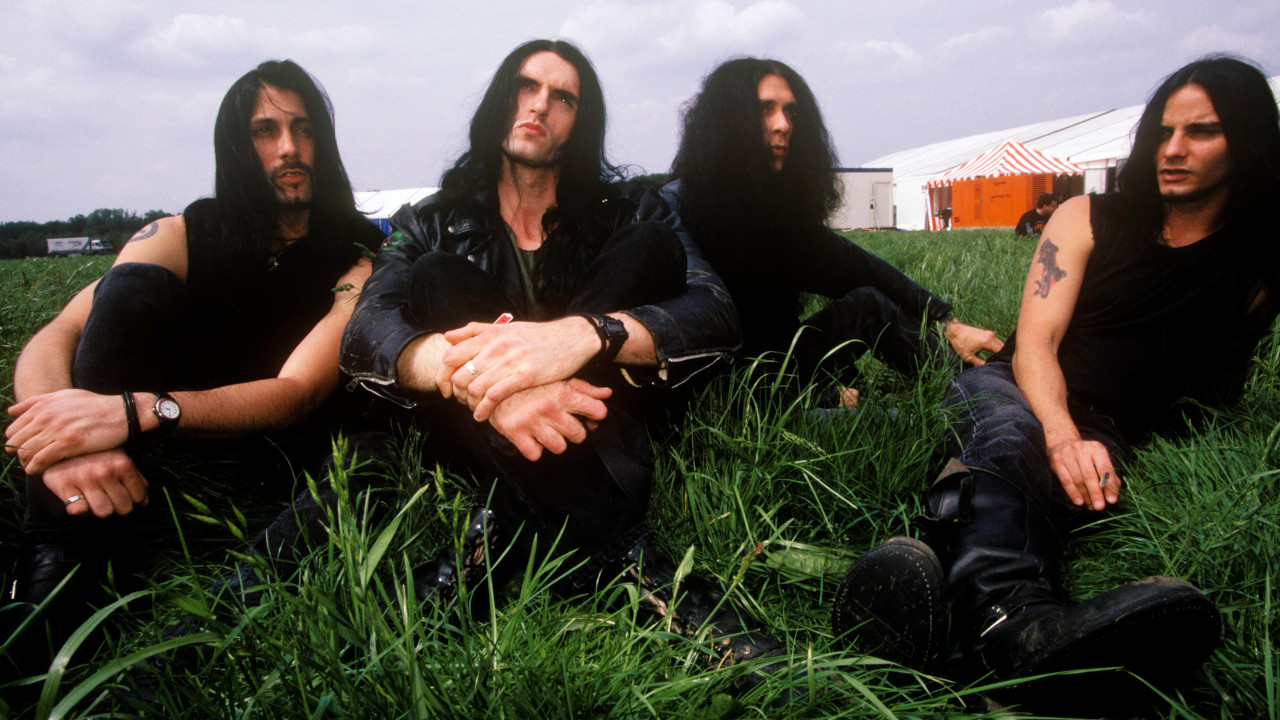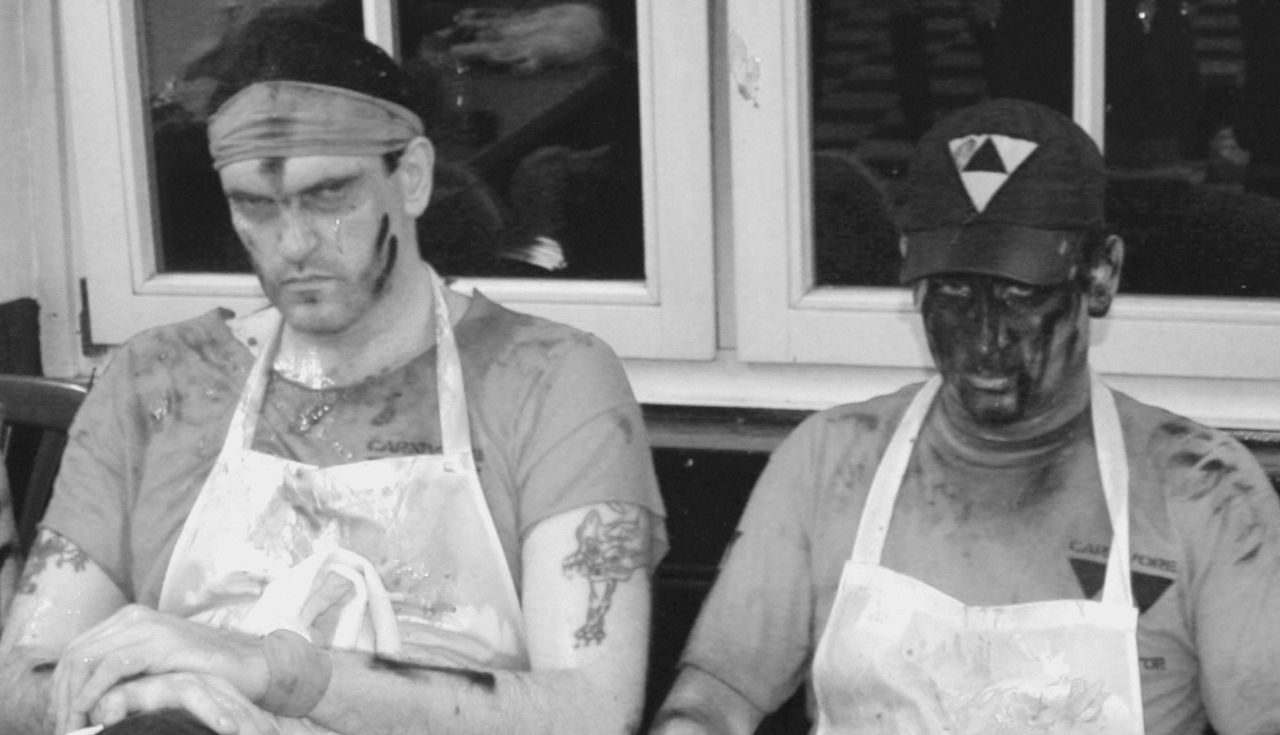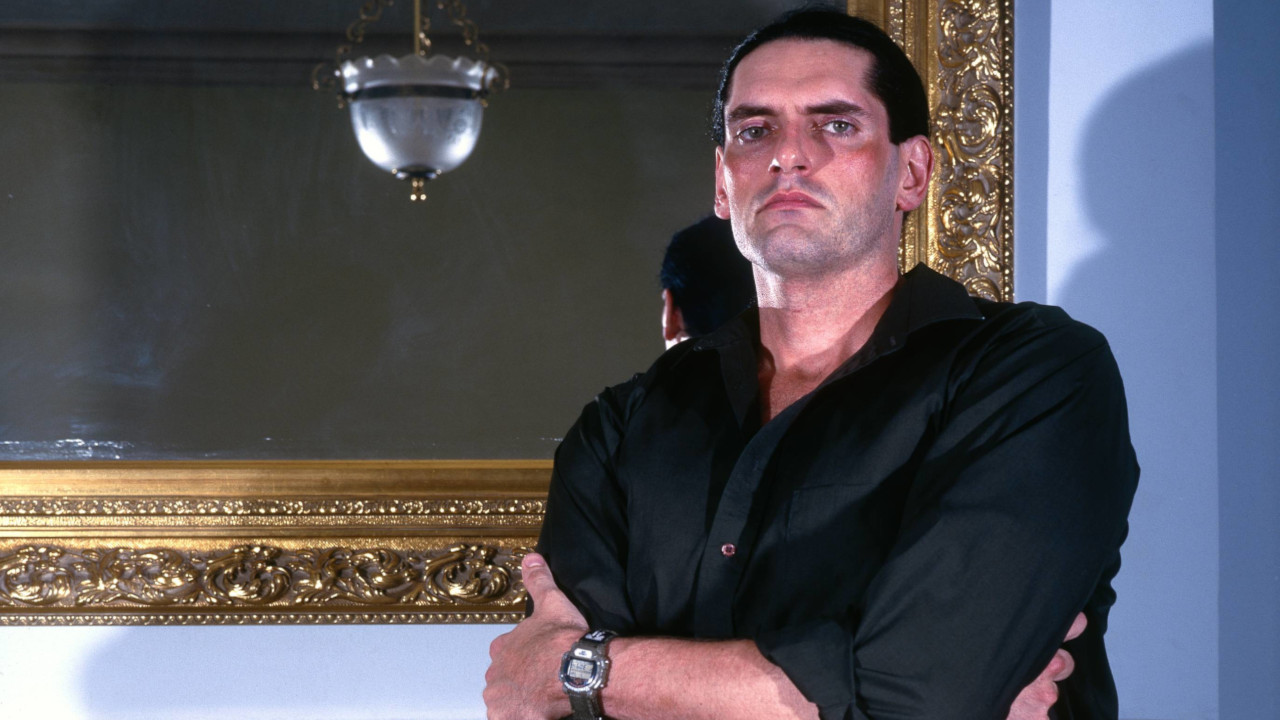How Type O Negative became the ultimate goth metal icons
With Bloody Kisses and October Rust, Type O Negative became goth metal icons - the vanguard for future generations of genre-blurring metal pioneers

On November 9 1995, Type O Negative’s Bloody Kisses became the first album in Roadrunner Records’ history to earn a Gold Certification in America. In doing so, it cemented the band’s transformation from perennial misfits into one of metal’s hottest new acts, leaders of the burgeoning goth metal scene and unlikely poster boys for a new breed of metal icon. Nobody was more surprised than the band themselves, however.
“When I joined, they told me – don’t quit your day job!” laughs Johnny Kelly, the drummer who had joined Type O Negative in 1993 following the departure of original drummer (and founding member) Sal Abruscato. “[Type O Negative vocalist] Peter [Steele] planned the band as being something where we’d play locally and make music, but not really tour. When our manager asked if I could get time off to tour it was a surprise – we ended up quitting our jobs, but even at that point we weren’t expecting to make a career out of it.”
This pessimism wasn’t entirely unfounded. When Type O Negative formed in 1989, vocalist Peter Steele had already been playing in bands for a decade, only achieving moderate success with his thrash/hardcore crossover group Carnivore. A combination of the band’s decidedly un-PC lyrical content and reluctance to tour nationally ensured they remained a cult draw at best, Carnivore ultimately collapsing shortly after the release of their second album, Retaliation.
Feeling his time in the spotlight was through, Peter applied to become a New York City police officer, only to be waylaid by future Type O Negative drummer Sal Abruscato, who had become friends with Peter during his time in Carnivore and – along with many other Brooklyn residents – regarded him as something of a scene legend.
“I heard the news [about Carnivore] and figured I’d go over unannounced and see how he was doing,” says Sal. “His father answered the door and let me down, and there’s Peter sitting in bed watching TV, having just cut all his hair off! He had just took the New York Police Department test; he didn’t want to play music anymore. I eventually asked if he wanted to hang out and jam, have some fun. He nods, saying he’s always wanted to have a band with electronica – keyboards, samples and things like that. I’m like ‘yeah, cool man!’ just saying anything so I could play with the guy!”

By summer 1989, Peter and Sal had recruited local musicians Kenny Hickey and Josh Silver [who had actually played with Peter in the pre-Carnivore band Fallout], working on songs that Peter had written for a third Carnivore album. Initially calling themselves Repulsion, they later changed their name to Sub-Zero and finally Type O Negative.
Type O Negative’s early years were often spent trying to extricate themselves from the legacy of Carnivore, as while the band hadn’t made major waves in the wider American music scene they had earned a passionate local following. Though they retained Carnivore’s core thrash/hardcore crossover sound, the inclusion of elements like 80s synth-pop keyboards and glacial doom metal proved challenging for fans who were expecting Peter to continue down the same path.
Sign up below to get the latest from Metal Hammer, plus exclusive special offers, direct to your inbox!
“Before Bloody Kisses the audiences were thrash-core guys with long hair and hardcore skinheads that made for a tougher audience,” Sal remembers. “In the early days we’d end up playing three or four Carnivore songs in our set, stuff like Predator, Race War or Jesus Hitler. The skinhead following still showed up at the early Repulsion shows expecting the wild mosh pits of Carnivore so we were mixing it up and throwing those things in there. They didn’t really understand songs like I Know You’re Fucking Someone Else – going from thrashy to half-time suddenly, or following it up with Prelude to Agony which was really slow – they hated it!”
The crowd weren’t the only holdover from Carnivore that Type O Negative had to contend with. During his time in Carnivore, Peter had signed a multi-album deal with Roadrunner Records and while the band had since split, Peter was technically still tied into the contract. While Peter felt unsure about continuing his relationship with the label – feeling they had failed to capitalise on promoting Carnivore – as it turns out, the label were also getting cold feet. Or they were until A&R legend Monte Conner fought Type O’s corner, anyway.
“I knew of Peter long before the Type O Negative days – I grew up on Staten Island, so I used to go see Carnivore play at L’Amour,” Monte says. “At the time Roadrunner was a tiny little label, and Peter wanted out because he hadn’t been happy with how those two Carnivore records were handled – he didn’t realise that even though Carnivore weren’t a band anymore he was still signed to the label as Peter Steele. The owner of the label came to me with the Repulsion demo and asked what I wanted to do with it – should we let him go, or bring it in to Roadrunner? I thought it was amazing, and we’d have been nuts to let him go!”
As he would continually prove throughout the 90s (having also worked with Sepultura, Life Of Agony, Slipknot and just about every other major RR signing in that period), Monte’s intuition was right. By the time they got to working on their third album (their second, Origins Of The Faeces, effectively just a remix of Slow, Deep And Hard) the elements for Type O Negative’s iconic sound were truly beginning to take shape.
In particular, the band focused less on their thrash elements (though didn’t do away with them completely, as with We Hate Everyone and Kill All The White People) and incorporated more overtly gothic elements into their sound. The resulting album, Bloody Kisses became a landmark for not only Type O Negative as a band, but for goth metal as a genre.
“The move into Bloody Kisses made a lot of sense; at that point Peter was showing me a lot of the bands you can hear in those later records,” Sal remembers. "We’d hang out on weekends and go into the city and Peter went in on the whole jet-black hair thing – songs like Black No. 1 were about the people we’d see. This was the pinnacle of nightlife in New York, there were a lot of cool bars and clubs we could go to and Peter got caught up in that. He would drive us around sometimes in his crazy car that had giant tractor tyres on, rolling into the city like The Munsters!”
The singles Black No. 1 (Little Miss Scare-All) and Christian Woman helped establish radio rapport for Type O Negative, but most of its members still balked at the idea of committing to the months of touring necessary to capitalise on the buzz surrounding the album. Frustrated and worried that the band would miss their shot, Sal left the band to join another local act, Life Of Agony.
“Bloody Kisses broke the ceiling for the band as we made the radio, and Peter was discovered for the talent we all knew he was.” Sal says. “Unfortunately we got blinded with some drama at that time too, and I ended up quitting the band right when the record was coming out. At the time it just didn’t seem like things were going to work or we were going to tour. When it took off I was so proud – and when they gave me the gold record, it felt like such an enormous accomplishment, then happened all over again some time later when it went platinum. Even after we’re all gone, it feels like people will still listen to these albums.”
“Peter was content being a local hero and playing locally,” Monte says. “He liked the security of a job and life, so he wasn’t really ready to give that all up on a whim. In a way, that contributed to Sal leaving the band; Sal wanted to go in fully and tour nationally, which the guys weren’t ready to do. When he left, Josh sent a load of pizza to the Roadrunner offices – it was his way of telling us he thought the band were through.”
But even Type O Negative weren’t pessimistic enough to pass up a tour offer from Nine Inch Nails, who were riding high on the success of The Downward Spiral. Ironically, just as Sal had hoped, touring proved to be just what Type O Negative needed to break through to wider audiences. A follow-up tour with Motley Crue of all people managed to tip the band over into widespread acclaim, pushing the band to leave their day jobs and commit fully to making music for the first time. But first, they would need to fill the now-vacant drum spot. Enter: Johnny Kelly.
“There’s a story about me being a drum tech for the band has got exaggerated over the years – I only did it a few times and was not a great tech haha!” Johnny clarifies. “It was more about driving; they had a show in California and needed someone to help, so I hopped in a van and we drove from New York to California for one show then drove back – it was one of the best times I’d had in my life. When Sal left, we all knew each other anyway and could literally walk to everyone’s houses, so I found out and the next day spoke to them to offer help. The band was always hanging on by a thread, from the very beginning. Nobody knew if they’d carry on or just break up, as there was nothing to gain or lose at that point, they were just a band from Brooklyn with a couple records out and another on the way.”
With Johnny Kelly now in the band, Type O Negative toured almost constantly for the next 18 months, earning more and more accolades and ultimately bagging their gold record in November 1995. The band weren’t about to let it get to their heads, however. “It was a steady build to us – like everything was going to end tomorrow,” Johnny says. “We ended up touring for a solid eighteen months for Bloody Kisses and every single time we got back it was ‘I guess that’s it’ – it was fun, but the fun was over.”
“Bloody Kisses was the first record to go gold in Roadrunner’s history – it was a dream come true!” Monte beams. “There was a two-year period where Type O Negative took over from King Diamond as the biggest band on Roadrunner. For all the great records Roadrunner put out in the 90s - Machine Head, Fear Factory, whoever - I’ll always be most proud of working with Type O Negative on Bloody Kisses.”
Ushered into the studio again shortly after receiving their Gold Certification, Type O Negative opted to lean in on their newfound status as goth metal icons for album #4, October Rust ultimately becoming one of the genre’s most iconic releases. “Even working on October Rust we didn’t know what was going to be next,” Johnny admits. “We thankfully had money we could live on, but we didn’t know how long we were going to be working on this new record and then suddenly six months later we’re on a bus again. We were on tour with Sepultura and Ozzy Osbourne, and Josh was on the phone in hotel rooms telling the engineer how to finish the record off!”
Amazingly, being whisked away from the studio before they’d completed the album didn’t hurt October Rust. If anything, it made the record more concise and focused than any of their past releases; while the band weren’t above indulging their dry sense of humour [opening track Bad Ground is 38 seconds of buzzing audio as if the listener’s audio set-up is plugged in incorrectly], they stripped away the skits of Bloody Kisses and bawdiness that had characterised Carnivore and even early Type O Negative material. In a 1996 interview with Jason Arnopp, Peter remarked “So far as shocking people goes, I think I’ve finally gotten that out of my system,” while also reflecting on the band’ surprise success. “I certainly don’t deserve the success that has come to me. If there is a God, she is smiling upon me – either that or someone down there likes me!”
With songs like Love You To Death, Wolf Moon (Including Zoanthropic Paranoia) and My Girlfriend’s Girlfriend, Type O Negative struck the perfect balance between tragic romance and tongue-in-cheek humour, just playful enough to keep their sense of humour in-tact whilst still living up to their assumed moniker of The Drab Four. Goth wasn’t the only genre to figure in the inspiration for October Rust, either.
“I remember when we first started working on My Girlfriend’s Girlfriend, Peter came to Josh’s house with this riff…” Johnny starts. “I straight away said ‘you can’t use that – it’s War Machine by Kiss!’ Peter wasn’t a Kiss fan, so he hadn’t realise.! He and Josh started arguing about how to work it in, so while they did that I jumped in my car, went to a record store and brought Creatures Of The Night to take it back, like ‘here’s your song!’. He sat down like ‘oh… we’ll speed up the tempo and put a surf beat to it!’ Obviously now it doesn’t sound anything like War Machine, but back then it was like ‘we can’t do that, we’ll get sued!’ Recording any album takes a piece of your soul out; it’s very intense work. Be My Druidess put a big dent in mine and Josh’s relationship ha ha. We fought about Druidess a lot – trying all different things, so whenever I hear those songs I just think about the fights we had to get them to the listener’s ears.”
Not all the songs on October Rust were so hard to conceive, however. “Red Water (Christmas Mourning) basically wrote itself – it didn’t take a lot of soul searching,” he says. “I got to Josh’s house and he’s like ‘Peter has an idea for a song – he came by yesterday’ and so I ended up going to the studio and working on it for like an hour and the drum tracks came together almost instantly. October Rust caught Peter at his most prepared, which surprised me because we’d been on the road so much – it never worked like that again, but here he knew exactly what he wanted and that’s how we got it done in six months. After that, it’d take six months just to think about getting together.”

Released on August 20 1996, October Rust marked the apex of Type O Negative’s commercial prowess. Reaching #42 on the US Billboard 200 (and #26 in the UK), the album became an instant classic, crystallising Type O Negative (and Peter Steele) as goth metal icons. Ever-mercurial, the band continued to experiment with their sound on subsequent releases World Coming Down (which focused a lot more on their doom metal elements), Life Is Killing Me (a record which comprised much of the diversity the band had exhibited to that point) and their 2007 swansong Dead Again (which brought them stylistically almost full-circle, with a greater thrash focus, albeit with shining moments of goth as on September Sun).
Through it all, Type O Negative never lost sight of the incredible artistry that made them one of the 90s most fascinating metal acts, unlikely stars even in an era where misfits were regularly hailed as heroes. “It’s crazy to think this all stated with me knocking on Peter’s door,” Sal says. “Just knowing that we have made records that people will still be listening to after we’re gone is monumental – you know, people were talking about that first Black Sabbath record again last year for its 50th anniversary, so kids who’ve never heard a note of that music are going to be checking it out. I don’t see any reason why that wouldn’t happen for Type O too, you know?”
“It felt more like surviving than creating a legacy!” Johnny laughs. “But here we are, 2021 and people still talk about the band, and I still run across people who tell me when I’m out how much our music played a part in their lives.”
Considering the impact Type O Negative had on subsequent generations of musicians – from HIM and Pallbearer to Trivium, Oceans Of Slumber and Code Orange – it isn’t understating to say that Type O Negative weren’t just goth metal icons: they were one of the first truly genre-blending pioneers.

Staff writer for Metal Hammer, Rich has never met a feature he didn't fancy, which is just as well when it comes to covering everything rock, punk and metal for both print and online, be it legendary events like Rock In Rio or Clash Of The Titans or seeking out exciting new bands like Nine Treasures, Jinjer and Sleep Token.

